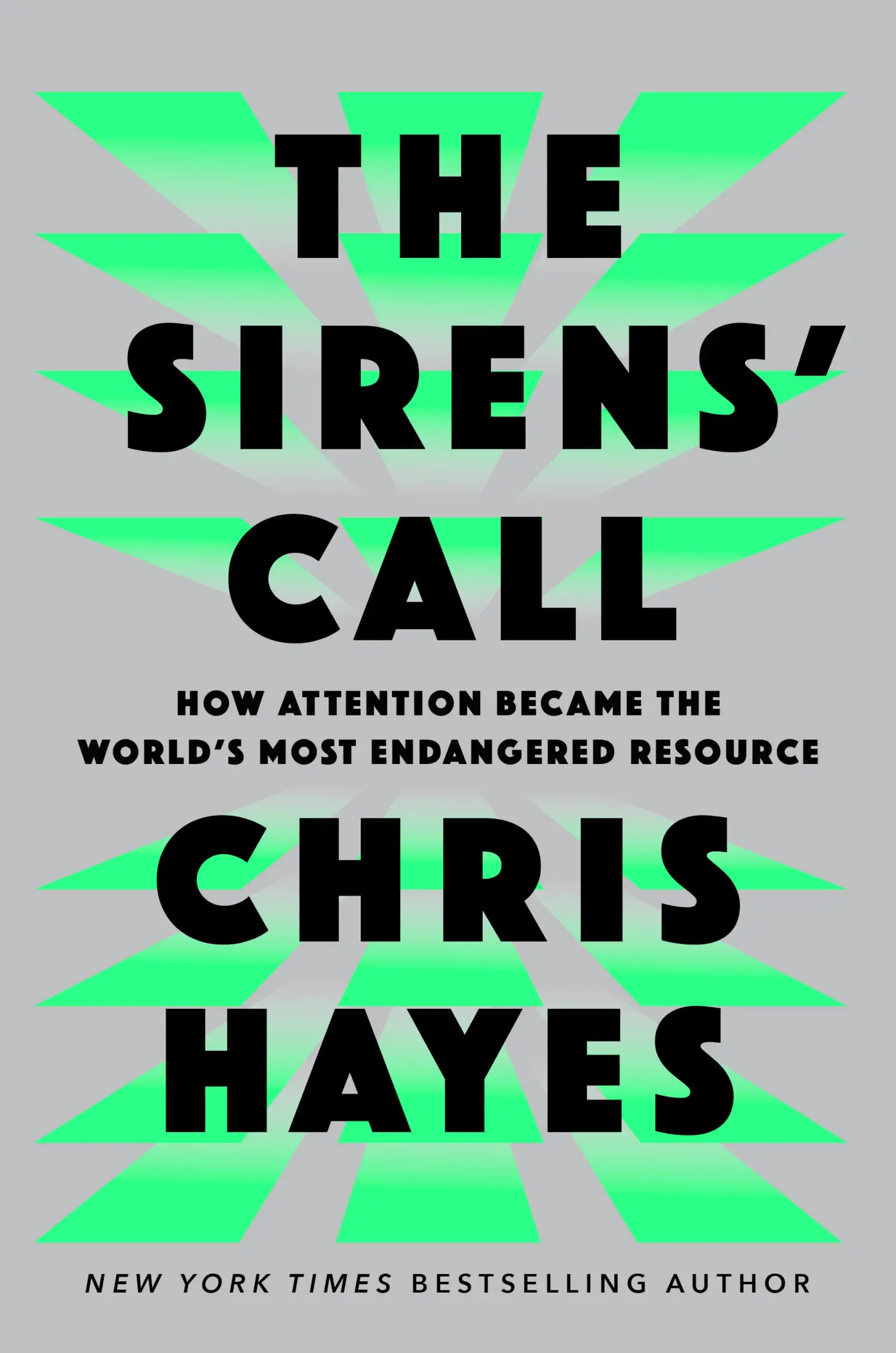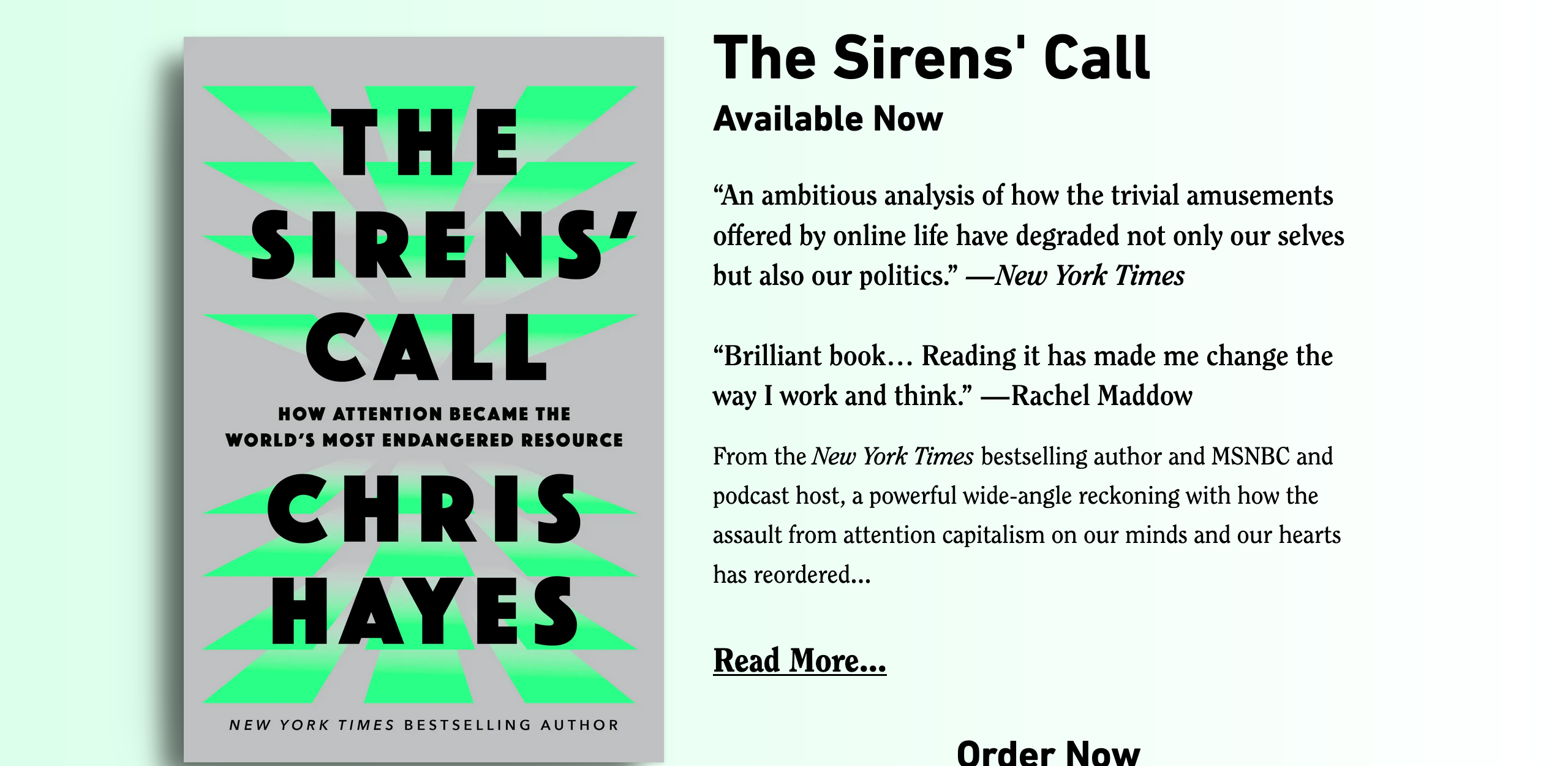I wanted to like Chris Hayes’s (2025) new book. Instead, I found myself wanting more from it.
Hayes compares the commodification of labor in the nineteenth century to the commodification of attention today. In doing so, he distinguishes among voluntary, involuntary, and social attention (27ff) and contrasts boredom and idleness (59ff) before considering the deep human desire for social attention as a remedy for loneliness, which he differentiates from solitude (81ff).

Hayes compares the commodification of labor in the nineteenth century to the commodification of attention today. In doing so, he distinguishes among voluntary, involuntary, and social attention (27ff) and contrasts boredom and idleness (59ff) before considering the deep human desire for social attention as a remedy for loneliness, which he differentiates from solitude (81ff).
Then he describes the attention age alienation as the unwitting extraction of human inner life, which has been transformed into a commodity (132ff). From there, he explains that information has become almost infinite while attention is finite (155ff), and that on a public scale leads to some of the worst aspects of digital life, such as trolling and conspiracies (195ff).
As a remedy, he invokes commitment mechanisms, such as the wax and ties that enable Odysseus and his crew to sail safely past the sirens. Such remedies could be vinyl records for some or print newspapers, Reddit, or group chats for others (251ff).
This analysis is useful as far as it goes. The historical context is invaluable, and the commodification analogy could prove to be productive despite the obvious differences between labor and attention. Both features and others increase our understanding of these issues, and the possibilities of productive responses.
At the same time, this book relies too much on personal experience, which doesn’t necessarily invalidate any insights but does leave these underdeveloped and as a result underwhelming. It also seems in its relatively fragmented form a product of the very attention economy that he is critiquing, and that represents a discomforting lack of awareness that could challenge its credibility.
Another draft or two could have increased the depth and synthesis of his analysis as well as enabled more developed, and useful, application. For example, it would benefit from demonstrating how his model can account for what is happening to both individual users and social spaces.
It also needs to offer more than some strategies he has been trying. I too for example have found print to be useful, and have incorporated more of it into my daily routines. At the same time, I expect more for my efforts, especially when such involve book-length projects.
Regardless, I think this book will be successful if it at least enables additional conversations about what these digital devices are doing to our communities and ourselves. Even if half-baked, it could be satisfying enough to make at least some reach for more.
